Barriers to reporting needlestick injures

“One in every five pharmacists in the state of Perak had a history of NSI, and 1 in every 10 had sustained a contaminated NSI” Arvinder-Singh et al (2022).
Occupational blood exposure risk – Full Text

“Occupational exposure to blood and body fluids in registered nurses is common, but the rate of under-reporting such exposure is high” Zhang et al (2022).
Safety engineered devices to reduce needlestick rates – Full Text

“An online cross-sectional survey was completed between October 2021 and March 2022 by 280 nurses. The incidence of exposure to sharp injury during their professional life was 51.4%” Garus-Pakowska et al (2022).
Needlestick injuries among nursing students – Full Text

“Through PDCA process management, we can keep abreast of the situation of needlestick injuries among nursing students in practice and analyze in more detail the root cause of each nursing student’s occupational exposure and the outcome of treatment” Chen and Zhang (2022).
Sharp injury prevention in Italy – Full Text

“Sharp injuries, determining the risk of bloodborne infections and psychological distress in healthcare workers, may be prevented by a set of strategies, legally enforced in Europe through the Directive 2010/32/EU” De Carli et al (2022).
Prevalence of needlestick injury among nursing students – Full Text

“A third of nursing students reported experiencing NSI. Consequently, occupational hazard prevention training and student support measures need to be considered”
Unsafe behaviour and needlestick injury – Full Text

“In the present study, some personal traits affecting the occurrence of needlestick injuries were identified” Majdabadi et al (2022).
Needlestick among dental students

“Dental students had a high prevalence and low reporting rate of NSI exposure. Inadequate knowledge might increase the probability of NSI exposure” Huang et al (2022).
Needlestick injury in Saudi Arabia – Full Text

“The high incidence and low rate of reporting of NSIs highlights the need of education and awareness raising programs targeting healthcare providers with higher risk of injury” Abalkhail et al (2022).
Needlestick rates at a German university hospital – Full Text

“Health care workers and students should be offered regular trainings to be sensitized to this topic and to learn the appropriate use of SED” Kaur et al (2022).
Sharp injury management among health care workers – Full Text

“This study aimed to determine the distribution and associated factors of sharp injury cases among HCWs working at a teaching hospital in northeastern Malaysia” Kutubudin et al (2022).
Needlestick injuries among anesthesia providers

“PGY2 residents and fellows had the highest rate of needlestick injury. Our study highlights the trend of increasing sharps injuries after PGY1 while supervising anesthesiologists had the lowest rate” Borna et al (2022).
Automatic needle destroyer – Full Text

“This study introduced a novel Automatic Needle Destroyer (AND) to an emergency department (ED) and assessed its effect on healthcare providers’ work” Kim et al (2022).
Retention of needle fragment – Full Text

“Needle fragments are possible causes of local symptoms among PWIDs. The clinical examination presents a potential risk of needlestick injury to the examiner, especially because patients may not be aware of all needle fragments as some are asymptomatic” Laukkala et al (2022).
Needlestick injuries in radiology

“Needlestick injuries with pathogen transmission can result in long-term health issues and psychological damage, therefore, it is imperative for radiologists to understand factors that increase the risk for transmission, methods to prevent injury, and how to manage an injury when it occurs” Lin et al (2022).
Needlestick injury and psychomotor performance

“Several factors play a role in Needlestick Injury (NSI). We aimed to determine the association of NSI with psychomotor performance in health-care workers” Pouryaghoub et al (2022).
Global incidence and causes of needlestick injuries – Full Text

“The aim of this study was to evaluate the incidence and causes of NSIs globally” Hosseinipalangi et al (2022).
Insulin injection-related needlestick injuries – Full Text

“This survey demonstrated a considerably high prevalence of insulin injection-related needle-stick injuries among clinical nurses” Li et al (2022).
Radiopharmaceutical needlestick injury – Full Text

“Implications of the findings for clinical practice are discussed, highlighting the need for a careful and calm approach to radiopharmacy activities” Elliott and Weatherley (2022).
Unreported needlestick rates in Turkey

“There were more injuries with sharp objects than the expected rates in our hospital although the reports were made very rarely” Korkmaz et al (2022).
Needlestick in anesthesia practitioners

“Based on our study results, most anesthesia practitioners will sustain a CPI during their years of practice” Zbeidy et al (2022).
Psychological effect of sharps injury

“An under-researched area is the psychological effects of such injuries. This article reports the findings of a narrative literature review that aimed to synthesise the evidence on this subject” Hambridge et al (2022).
Occupational blood exposure in South Africa – Full Text

“The findings suggest that BBF related knowledge and practices among EMS providers working in the eThekwini metropole may be inadequate, and may increase the risk of blood exposure” Chetty et al (2022).
Post-exposure needlestick prophylaxis

“The present study aimed to investigate research trends on post-exposure prophylaxis (PEP) against blood-borne viral infections among health care workers” Sweileh (2022).
Needlestick injury among dental students – Full Text
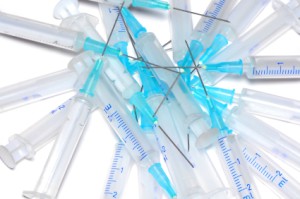
“Dental students are prone to needlestick injuries. The present study clearly reveals a need for increased awareness of NSI prevention among dental students” Huang et al (2021).
Needlestick in nursing education
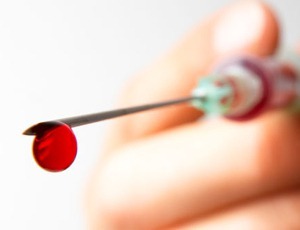
“Increasing awareness and empowerment levels of nursing students through training can reduce the occurrence and the underreporting of NSIs” Bilek et al (2021).
Needlestick prevention among nursing students in China – Full Text
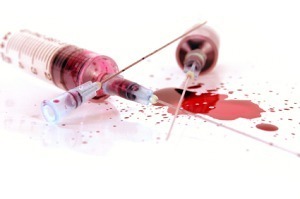
“A cross-sectional study of 400 nursing students was carried out to assess the participants’ knowledge, attitudes, and practices regarding prevention of NSIs” Wang et al (2021).
Blood exposure reduction – Full Text

“Considering all the potential means of blood exposure (needle stick injury, sharp medical equipment injury, and blood splash) while excluding blood-free body-fluids” Reda et al (2021).
Needlestick and splash exposure – Full Text
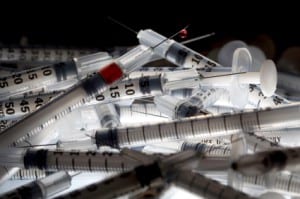
“The aim of this study is to conduct a systematic review and meta-analysis to review published literature about sharps injuries and splash exposures of healthcare workers in Arab countries” Karkaz et al (2021).
Student nurse sharps injuries
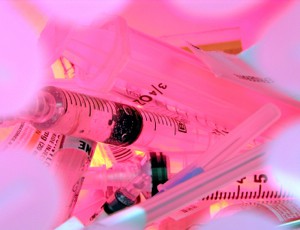
“Sharps injuries are common among nursing students, and can have many psychological consequences for an individual” Hambridge et al (2021).

